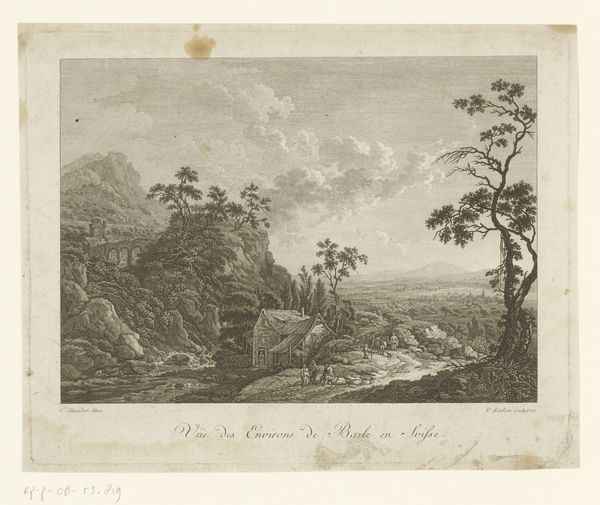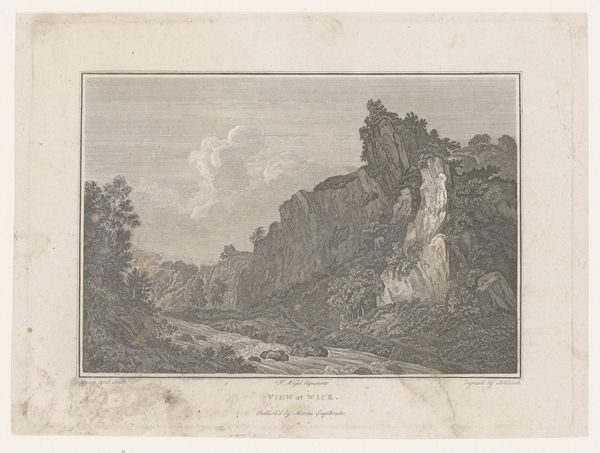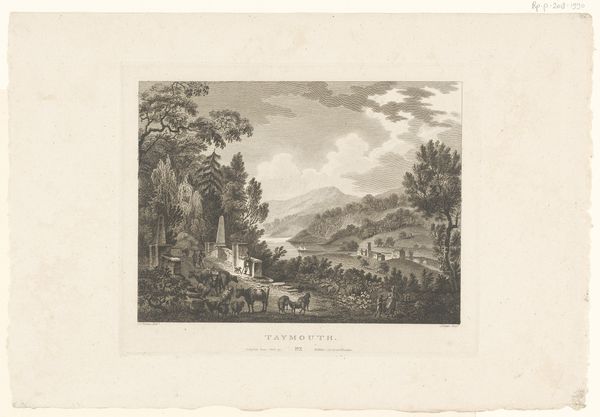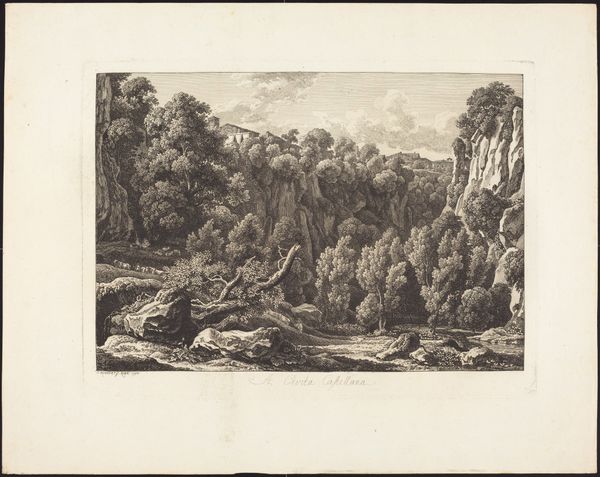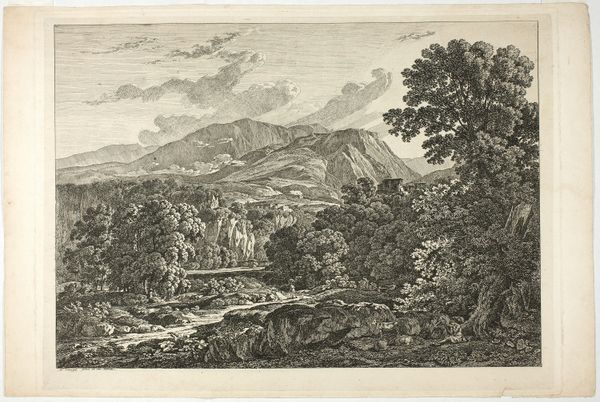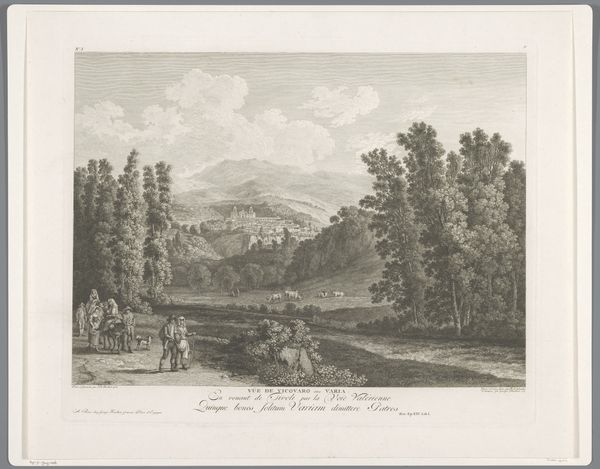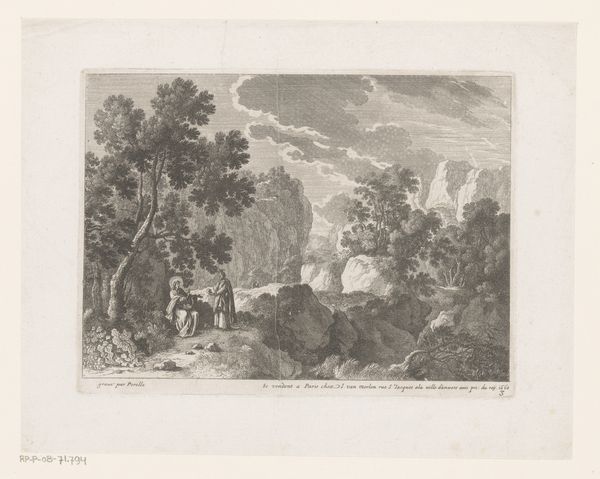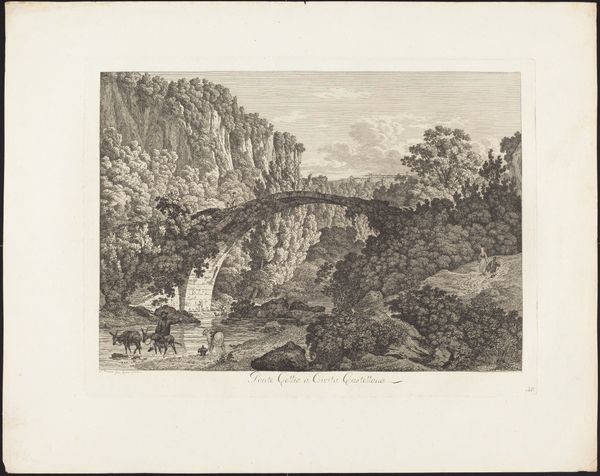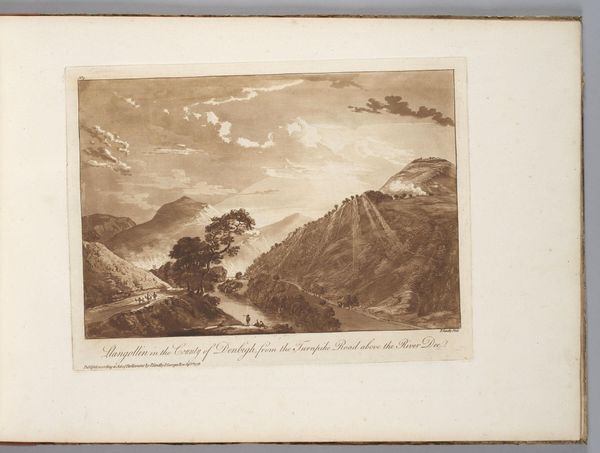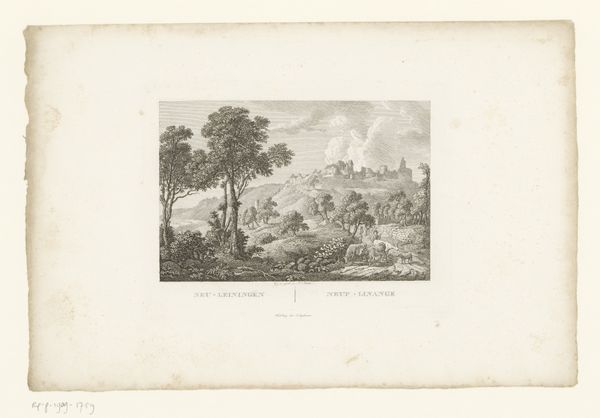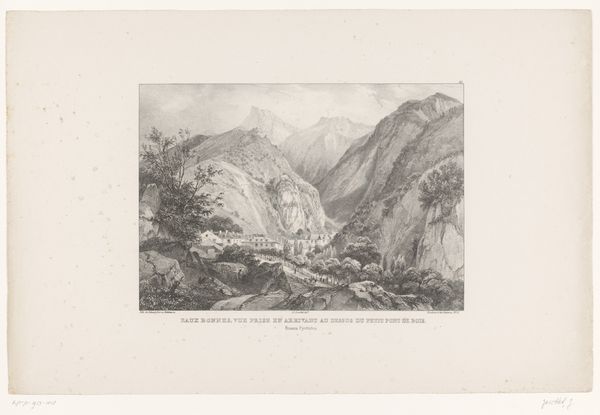
print, etching
#
neoclassicism
# print
#
etching
#
landscape
Dimensions: plate: 37.6 x 28 cm (14 13/16 x 11 in.) sheet: 49.2 x 39.2 cm (19 3/8 x 15 7/16 in.)
Copyright: National Gallery of Art: CC0 1.0
Jacob Wilhelm Mechau created this print, "Caduta del Velino a Papigno, vicino a Terni", using etching, a method of printmaking dating back to the Middle Ages. In this process, a metal plate is coated with a waxy, acid-resistant material called a ground. The artist then draws through the ground with a pointed tool, exposing the metal beneath. When the plate is immersed in acid, the exposed lines are "bitten" or etched into the metal. Ink is then applied to the plate, filling the etched lines. The surface is wiped clean, and the image is transferred to paper under high pressure using a printing press. Here, Mechau has masterfully controlled the etching process to capture the textures and forms of the Italian landscape. The fine lines create a sense of depth and atmosphere, while the varying densities of the etched lines define the contours of the hills, trees, and cascading water. The level of detail and the time-consuming process involved speak to a tradition of skilled craftsmanship, elevating printmaking beyond mere reproduction into an art form in its own right. Appreciating the techniques involved allows us to fully grasp the beauty and artistry inherent in this seemingly simple print.
Comments
No comments
Be the first to comment and join the conversation on the ultimate creative platform.
